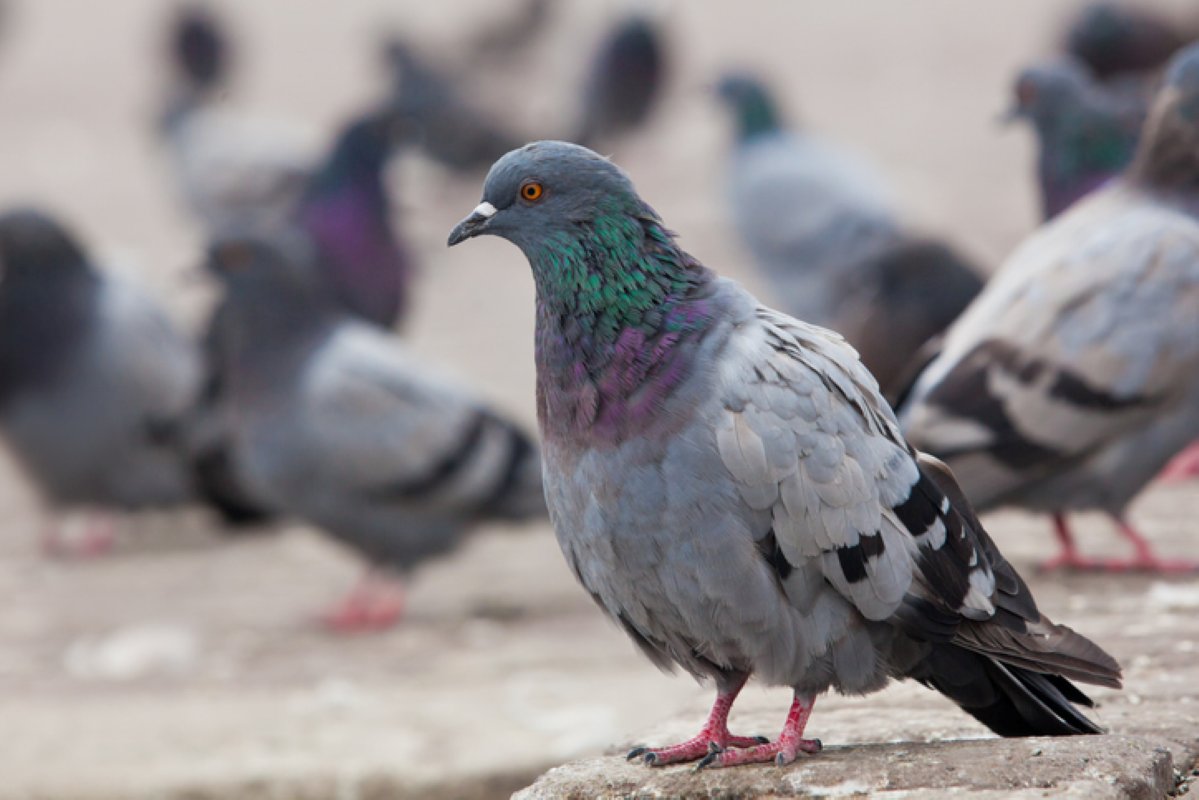You can see them congregating by the dozens on power lines, huddled on street corners, or even darting through subway stations far below ground. Pigeons are a fixture of city life, thriving in urban environments where food, shelter, and nesting spots are abundant.
Safe to say, pigeons are everywhere. But just how much of a risk do they pose to your health? While they may seem harmless, pigeons can carry and spread diseases that affect humans. Let’s explore how pigeons transmit diseases and what you can do to protect yourself.
How Do Pigeons Spread Diseases?
Like many animals, pigeons can carry diseases that are transmissible to humans. Some well-known examples include rabies from mammals, Lyme disease from ticks, and salmonella from reptiles and rodents, but pigeons are far and away one of the most common sources of disease transmission to humans.
There are two main ways to contract a disease from a pigeon: through contact with pigeon droppings and via direct contact with the birds themselves.
Pigeon Excrement Diseases
Pigeon droppings are a common sight in urban settings. Whether they’re splattered on sidewalks, accumulated on railings, or covering rooftops, these droppings can pose a significant health hazard if you aren’t careful. Over time, dried droppings can breakdown into microscopic particles that become airborne, making them easy to inhale and increasing the risk of infection.
The diseases you are most likely to catch through contact with pigeon droppings include:
- Histoplasmosis. A fungal infection caused by inhaling airborne spores from pigeon droppings. Histoplasmosis mainly affects the respiratory system, causing flu-like symptoms such as coughing, fever, and fatigue. In severe cases, it can lead to lung infections and complications in individuals with weakened immune systems.
- Cryptococcosis. This is another fungal infection that spreads through airborne pigeon droppings. Unlike histoplasmosis, which mainly impacts the lungs, cryptococcosis can impact your central nervous system. This could lead to meningitis in those with compromised immune systems.
- Psittacosis. A bacterial infection also known as “parrot fever,” psittacosis can be transmitted by inhaling particles from dried pigeon droppings. Though named after parrots, this disease is also found in pigeons and other birds and leads to symptoms such as fever, headache, chills, and pneumonia-like respiratory distress.
Pigeon Contact Diseases
While not as common as coming into contact with pigeon droppings, direct contact with pigeons poses the same risks of the disease listed above along with several additional ones.
Pigeons are incredibly common in dense urban areas across America, and we recommend avoiding them whenever possible due to the risk of catching bird-borne illnesses.
The diseases you are most likely to catch through contact with pigeons include:
- Salmonellosis. Like other animals, pigeons can carry salmonella bacteria, which is typically transmitted through contact with contaminated surfaces or food. If you touch a surface where a pigeon has been and then eat without washing your hands, you may unknowingly ingest the bacteria. Without treatment, this could lead to food poisoning symptoms such as nausea, vomiting, and diarrhea.
- Ectoparasites. Pigeons often carry external parasites, such as mites, fleas, and ticks, that can transfer from birds to humans or pets. Mites, for example, can cause skin irritation, while certain ticks may transmit Lyme disease or other tick-borne illnesses.
How To Clean Pigeon Droppings
Pigeon droppings can be unsightly and pose health risks due to bacteria and fungi. To clean them safely, follow these steps:
- Wear protective gear. Use gloves, a face mask, and safety goggles to avoid inhaling harmful particles.
- Dampen the area. Lightly spray the droppings with water to prevent dust from becoming airborne. Avoid dry sweeping, this will create airborne particles.
- Use a cleaning solution. Mix one part bleach with 10 parts water or use a commercial disinfectant. Apply the solution and let it sit for at least 10 minutes before cleaning.
- Scrub and remove. Use a stiff brush or scraper to remove the droppings, then dispose of the waste in a sealed bag. Be sure to have circulation in the room while you do.
- Sanitize the surface. After removal, wipe down the area with disinfectant to kill any remaining bacteria from the droppings.
If pigeon droppings are excessive or located in hard-to-reach areas, consider professional cleaning services to ensure safety and thorough sanitation.
Keep Pigeons Away From Your Property With Burns
If you’re dealing with flocks of pigeons nesting on your roof, perching on ledges, or leaving droppings on walkways, the problems they cause can quickly get out of hand.
The best way to avoid the health risks associated with pigeons is to keep them away before they become a problem, and Burns Pest Elimination is here to help with our expert bird control services.
With deterrent strategies that are just as effective as our removal services, you can experience lasting relief from pigeons and any other bird that tries to pester your property. Contact us to schedule your bird control service from Burns Pest Elimination today.
